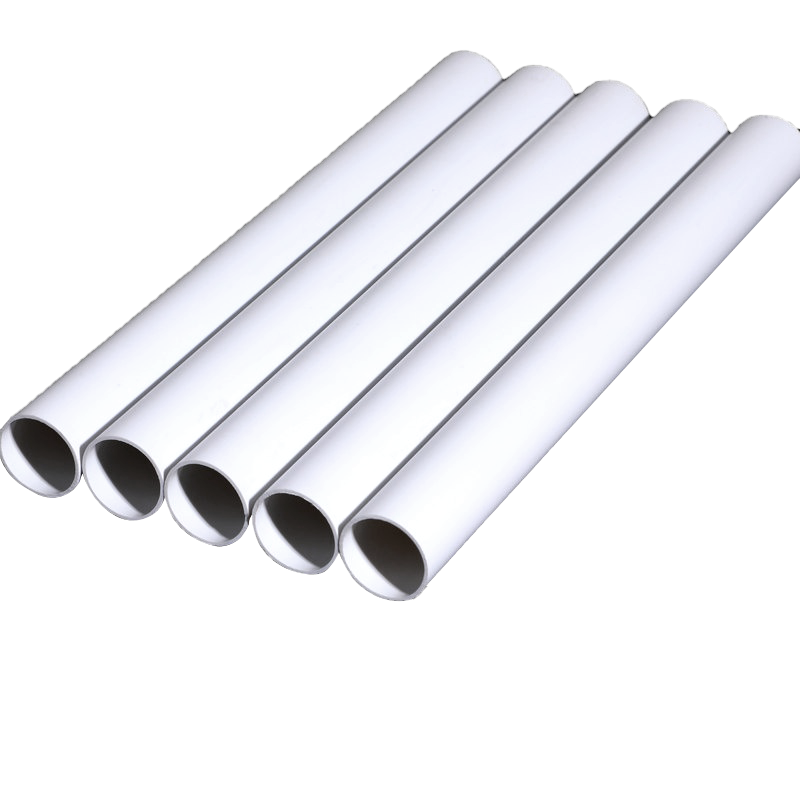Search by posts
Product category
Industry News
 By Admin
By Admin
Are plastic pipes ok for plumbing?
Plastic pipes have become increasingly popular in residential and commercial plumbing systems over the past few decades, replacing traditional materials like copper, galvanized steel, and cast iron. While some people still prefer metal piping due to long-standing perceptions of durability and reliability, modern plastic piping offers several advantages that make it a viable—and often preferable—option for many plumbing applications.
Types of Plastic Pipes Used in Plumbing
There are several types of plastic pipes commonly used in plumbing today:
PVC (Polyvinyl Chloride) – Often used for drain, waste, and vent (DWV) lines. It is rigid, durable, and resistant to corrosion.
CPVC (Chlorinated Polyvinyl Chloride) – Similar to PVC but can handle hot water, making it suitable for hot and cold water supply lines.
PEX (Cross-linked Polyethylene) – Flexible and easy to install, PEX is widely used for residential water supply lines. It is resistant to scale and chlorine and can withstand freezing conditions better than rigid pipes.
ABS (Acrylonitrile Butadiene Styrene) – Commonly used for drain lines, especially in areas with colder climates.
Each of these materials has specific uses and code requirements depending on local building regulations.
Advantages of Using Plastic Pipes
One of the biggest advantages of plastic pipes is their resistance to corrosion and rust, which are common issues with metal piping. This makes them ideal for long-term use in both above-ground and underground applications. Additionally, plastic pipes are lightweight, which reduces labor and transportation costs during installation.
Another major benefit is cost-effectiveness. Plastic piping is generally less expensive than copper or steel. For homeowners and builders looking to reduce material and labor costs, plastic pipes offer an economical alternative without compromising functionality.
Plastic pipes also tend to be easier to install. For example, PEX tubing can be snaked through walls and connected using simple crimp or push-fit fittings, reducing the need for extensive cutting, soldering, or threading, which is required with metal pipes. PVC and CPVC pipes use solvent cement joints, which are quick and create strong, leak-proof connections.
In terms of performance, plastic pipes can handle a wide range of temperatures and pressures. CPVC and PEX, in particular, are approved for hot water distribution and can perform reliably under normal household conditions. Moreover, plastic piping is quieter than metal pipes, helping to reduce the sound of water flow and hammering in walls.
Considerations and Limitations
Despite their many benefits, plastic pipes do come with some limitations. One concern is UV degradation; prolonged exposure to sunlight can weaken some types of plastic, such as PEX, so they should not be left outdoors without proper protection. Also, while plastic pipes are heat-resistant to a degree, they cannot withstand extremely high temperatures like metal pipes can. For this reason, they are not recommended for high-temperature applications such as steam lines or directly adjacent to water heaters without appropriate insulation or transition fittings.
Another consideration is chemical compatibility. Some plastics may react with certain substances, potentially leading to leaching or degradation over time. It’s important to choose the right type of plastic pipe for the intended application and ensure compliance with local plumbing codes.
Lastly, while plastic pipes are durable, they can be more susceptible to physical damage than metal pipes. For instance, sharp objects or excessive force can puncture or crack them if not properly protected during and after installation.
Pastic pipes are not only acceptable for plumbing—they are often the preferred choice for many modern plumbing systems. With proper selection, installation, and adherence to local building codes, plastic pipes offer a safe, durable, and cost-effective solution for residential and commercial plumbing needs. As technology continues to improve and new materials are developed, the role of plastic piping in modern construction is likely to expand even further.
Recommended products
-
2023 New Cheap Plastic Pipe Multiple Colors And Sizes Custom Hand Waving Flagpole
-
Wholesale Custom Pvc Material Indoor Desktop Flagpole Hand Waving Flagpole
-
Customizable Size Custom Logo Plastics Hand Waving Flagpole Big Pvc Flagpole
-
Plastics Hand Waving Flagpole Factory Direct Custom Wholesale PVC Flagpole Parts Pipe
-
Custom Easy Install Safety Flagpole Pvc China Factory Hand Waving Flagpole
-
New Popular Product Transparent Pvc Flagpole Custom Size Hand Waving Flagpole
-
2023 High Quality Hand Waving Flagpole Big Or Small Flagpole Size Custom
-
Fast Delivery Promotion Factory Wholesale Flagpole Pvc Pipe Hand Waving Flagpole
-
2023 Personalized Custom Desk Hand Waving Flagpole Outdoor White Flagpole
-
Wholesale 2023 Hot Sale Used Flagpole Weight Custom Pvc Hand Waving Flagpole
-
Wholesale Products Cheap High Quality Hand Waving Flagpole Newest Sections Flagpole
-
Wholesale Cheap High-Quality Hot Sale Flagpole Cylindrical Hand Waving Flagpole

 +86-0573-88528475
+86-0573-88528475 English
English русский
русский












